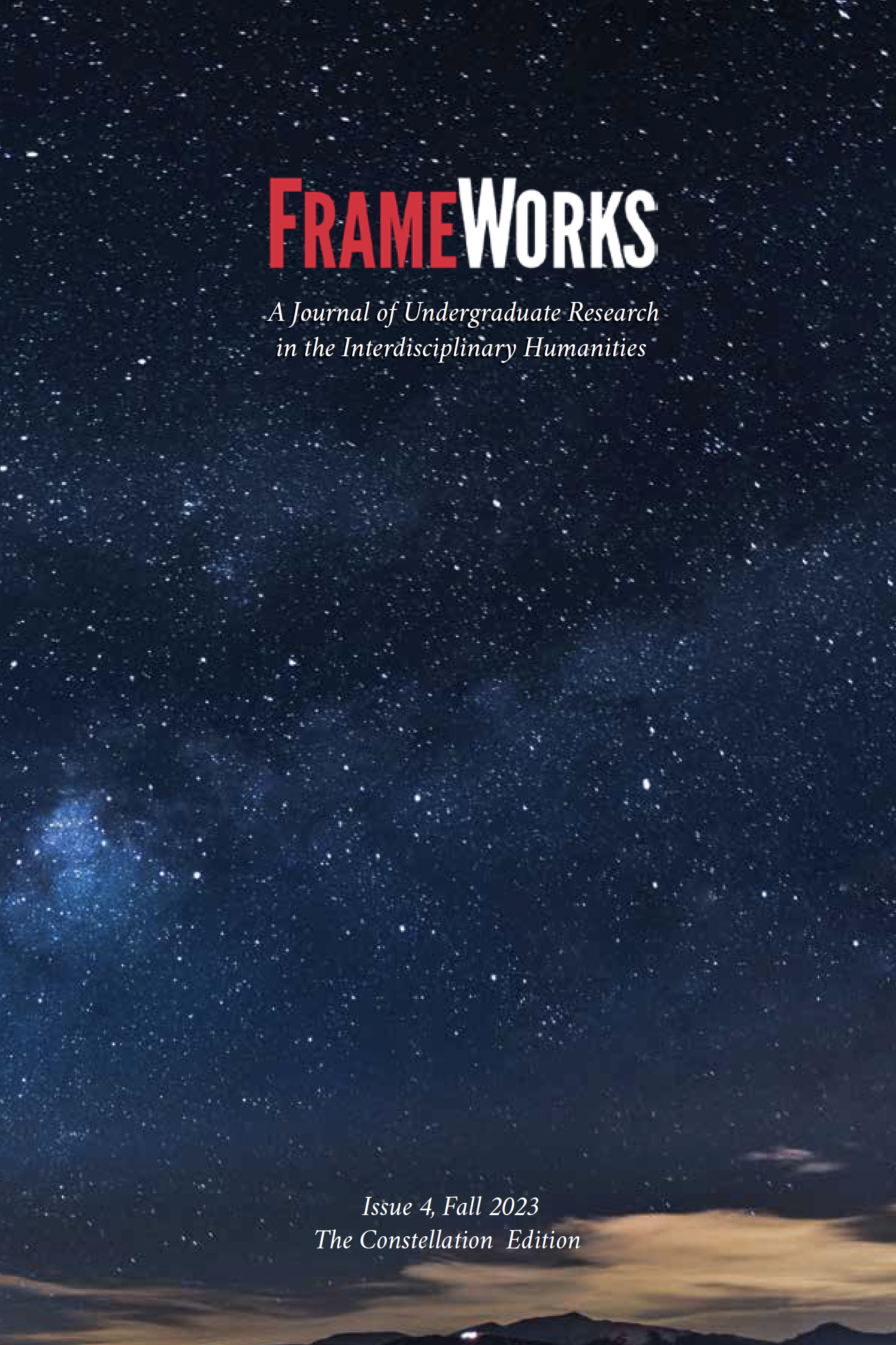OUR HOUSTON
CLICK TO READ THE OUR HOUSTON EDITION
We proudly present the 6th Issue of FrameWorks: A Journal of Undergraduate Research in the Interdisciplinary Humanities. Over the 2024-2025 academic year and well into the summer, the FrameWorks Fellows worked hard to conceive, research, write, present, refine, and edit articles that addressed themes germane to the city in which we live and which our university serves. We are calling this the “Our Houston” edition.
Houston, AKA Bayou City, the Energy Capital of the World, H-Town, Space City, is difficult to pin down. Of course, there are textbook facts: it was founded in 1836; it is named after General Sam Houston; its summer are too hot and humid. Other such facts include Houston being home to Johnson Space Center, the Texas Medical Center (the world’s largest healthcare and research complex), major players in just about every aspect of energy industry, and the nation’s busiest port in terms of waterborne tonnage (“Houston Ship Channel”). Uncontestably, it has championship sports franchises like the Astros (2017, 2022), Rockets (1994, 1995) and the Houston Dash (the inaugural NWSL Challenge Cup winners in 2020). Not to be outdone, the city’s NFL franchise, the Houston Texans, have a cool logo. And their stellar facilities come in handy when the city hosts its annual “Super Bowl of Country Culture” (Sims), the Houston Livestock Show and Rodeo. These are facts on which we can all agree.
Trickier to pin down, however, is our Houston’s cultural character. Its various top-class industries (energy, healthcare, aeronautics, shipping) and lower cost-of-living relative to other major urban centers in the U.S. make the it appealing to migrants from across the country and world. As a result, Houston is often described as one of America’s most economically, linguistically, and culturally diverse cities (Hu; Batalova, Fix, Lacarte). All this to say that while Houstonians may agree on some facts about our city, but we also live here in many different ways, reflecting a multitude of origins, histories, ideals, cultural practices, and faiths. To fully know Houston, one might say, is to see and comprehend it through the viewpoints of others (with apologies to Adithi).
The articles in this edition of FrameWorks attest to our city’s heterogeneity. Each invites readers to know Houston a little better by stepping into one of its many cultural pockets and to consider the histories, tensions, challenges, aspirations, and /or successes to be found there.
Noah Cook immerses himself in the paintings of Mark Rothko, examining the ethos underlying the evolution of the Menil Chapel and its battle with Houston’s notorious elements. Emme Tomasello assesses the University of Houston’s response to the polarizing presence and defacement of Shahzia Sikander’s sculpture, Witness. Adithi Nythruva sees Rama’s exile and eventual triumph, as described in the Ramayana, as a mirror to the experience of Hindu Indian immigrants to Houston and their successful establishment of a thriving community. Sophie Nguyen reads poems from Ocean Vuong’s first collection, Night Sky with Exit Wounds, as well as their critical reception, as revealing the tension experienced by many Vietnamese American immigrants (and subsequent generations) between Vietnameseness and Americanness. Anisah Khan’s research was inspired by the desire to have greater understanding of the 1947 Partition’s legacy in Houston’s South Asian community. Romina Suarez sees in Houston’s rich muralism tradition an opportunity to rouse the city’s young Latinos and Latinas to scholarly and professional success.
In its own way, each article tells the story of people committed to bettering their world, be that through art, protests, education, faith, or a more nuanced understanding of themselves and others. That, I would suggest, is a worthy encapsulation of our Houston’s denizens: our opinions may differ to the point of irreconcilability, but we are resolutely hopeful.
FrameWorks now includes a new section that features the winners of the Human Situation Best Essay Prize. This year’s best essays were written by Sarah Malik and Carden Tran. We include them in the journal in the hope that they, too, will inspire student writers to new heights.
The FrameWorks Program is hugely indebted to Profs. Laura Bland and Robert Cremins, both of whom are moving on from the University of Houston. They have been stalwart supporters of the program in spirit, as mentors, Editorial Board members and, in Prof. Bland’s case, as a workshop leader. My sincerest thanks and best wishes to you both. Finally, the FrameWorks Program will be taking a sabbatical year in 2025-2026. See you again in 2026-2027!





